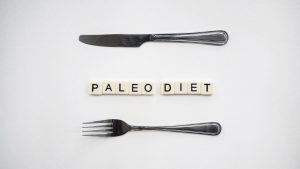 If you’ve heard about the Paleo diet, but didn’t know what it was, you might wonder if it was good, a hoax or just another fad. It’s based on the diet that man might have eaten during the Paleolithic period—2.6 million years to 12,000 years ago. During that period of time, man was not agrarian and instead was a hunter-gatherer. Man didn’t eat grains, dairy, sugars, salts, oils, caffeine, alcohol or legumes, but focused on meat from wild animals, and what they could forage in the wild, like fruit, nuts and roots. The idea is to go back to the way man ate then to maximize digestion and benefits.
If you’ve heard about the Paleo diet, but didn’t know what it was, you might wonder if it was good, a hoax or just another fad. It’s based on the diet that man might have eaten during the Paleolithic period—2.6 million years to 12,000 years ago. During that period of time, man was not agrarian and instead was a hunter-gatherer. Man didn’t eat grains, dairy, sugars, salts, oils, caffeine, alcohol or legumes, but focused on meat from wild animals, and what they could forage in the wild, like fruit, nuts and roots. The idea is to go back to the way man ate then to maximize digestion and benefits.
Actually, man ate quite differently from what Paleo enthusiasts proclaim.
The Paleolithic Era lasted about 3 million years and a lot changed over that course of time. It includes humans who were functioning more like animals to humans that used fire and tools. Diets did change. The geography of man made a difference, too, and food that was available in the local area varied. People living in areas closer to the equator, near lakes and oceans or in lush forests ate differently from those who didn’t.
Even the food sources were different from those used today.
Food sources have changed. They were hybridized by man to be more appealing and larger. Bananas once had seeds and corn had very few kernels. Wild cabbage was the wild ancestor of wild ancestor of Brussels sprouts, cabbage, broccoli, cauliflower, collard greens, and kale, which didn’t exist in the Paleolithic period. It was nothing like its descendants. We no longer have woolly mammoths for a winter stock of food, and the breeds of animals whose products are found in the grocery store didn’t exist. Animals were grass fed and not raised in factory farms, which also made them a healthier source of food.
The Paleo diet can still provide benefits, even if it’s not historically correct.
While you’ll never be able to truly eat like a caveman, it’s still a good idea to eliminate processed food from your diet. Cutting out food with added sugar is also a good idea. The Paleolithic diet also includes using the whole animal approach, which means organ meats, bone marrow and cartilage is used in the diet, which is also a good thing. The diet is filled with fruits, vegetables and seeds, but not oils and uses fermented food as part of the diet, both of which are good and part of a sensible diet for good health and weight loss.
- The Paleo diet also cuts out grain and dairy. Whole grain, legumes and dairy are part of a healthy diet. They provide important nutrients for the body, plus whole grains and legumes provide fiber, which can fill you up to help you lose weight.
- Unlike the average American diet, there were no chemicals in a caveman’s diet. However, even fresh fruit and vegetables may be modified and contain some pesticides. The food sources of early man were less bountiful, but far more nutritious.
- Early man ate more food that was high in omega-3 fatty acids. Grass fed animals and their products contain more. Today, researchers are learning just how important that is for good health.
- While the Paleo diet may not be historically correct, so it doesn’t take the digestive system back to the food man could digest easily, cutting out processed food, food with added sugar and food with white flour can definitely improve your health.
For more information, contact us today at LIV Fitness
